JTF (just the facts): A total of 17 large scale black and white photographs, framed in grey and unmatted, and hung against white walls in the entry area and a series of four divided spaces. All of the works are gelatin silver prints, made between 1976 and 2012. Physical sizes range between 47×59 and 73×188, and the prints are available in editions of 5. A monograph of this larger body of work, entitled Hiroshi Sugimoto: Dioramas, was recently published by Pace/Damiani (here) and is available from the gallery for $65. (Installation shots below.)
Comments/Context: Back in the late 1970s, Hiroshi Sugimoto began his love affair with dioramas. In those days, the idea of making photographs of the staged scenes of taxidermy and painted backdrops in the American Museum of Natural History was a radical conceptual inversion, much more so than it might seem today. Sugimoto was playing with the mixed duality of the artificial and the real, twisting nature in unnatural ways. And he was investigating the way in which a camera sees, allowing its vision to effectively flatten the space, making his photographs look plausibly real, albeit with an often dark, surreal, off kilter mood. His selections of a polar bear with a bloody seal carcass, a gathering of hyenas and vultures, and wart hogs attacking an ostrich nest said something about the inherent violence of nature, but with a layer of obvious staged formality. These early pictures displayed the elegance of smart conceptual thinking, seemingly so simple but delivered with surprising nuance and bite.
This new show brings Sugimoto back to the diorama form, his fourth foray into the subject in the past forty years. After interludes with dioramas of early life and prehistoric times in the 1980s and 1990s (where he honed adjacent artistic interests in fossils and stone tools and their ability to provide links to the past like photographs do), his recent images turn their attention to unpeopled landscapes and geographies. Massive tree trunks sit in the foreground of dark forests, with low vegetation transitioning to painted backdrops, three dimensions transformed into two in the receding depth. The darkest of the environments, the Olympic rain forest and the original forest in Northern Pennsylvania, feel like fairy tale settings, with wary deer peering out from the safety of the shadows. Other images of the forests of pinon/juniper, spruce/fir, and mixed deciduous growth have a satisfyingly “natural” emptiness; these are places that haven’t yet been clear cut for suburban houses, or have returned to their natural state in some distant future when humans are long extinct. An undercurrent of ecological preservation is Sugimoto’s new theme, a treasured reverence for these pristine environments undisrupted by man; the message is that these amazingly rich places will be just fine (or perhaps better off) without us.
Photographically, the biggest change to be found in these new works is Sugimoto’s transformative use of monumental scale. A few of the new dioramas stretch more than 15 feet wide, covering an entire wall with a heft that mimics the scale of nature – the panoramic pictures draw you in and force you to wander both horizontally and front to back in the depth of the frame, reveling in their enveloping detail. His old dioramas have been super sized as well, some shown double or triple their original intimate sizes. While not quite one-to-one life sized yet, all of the dioramas now have significant physical presence, the power of nature much more palpable and the conceptual illusion of “photographs-of-staged-scenes-made-to-look-real” more archly convincing.
This show is really a gathering of new pictures with a selection of older work as a supporting sample rather than a comprehensive chronological explication, and I think an opportunity was missed to tell a more complex story about the evolution of Sugimoto’s diorama photographs over the decades. That said, the best of these new photographs have a luxurious majesty to them, supported by the inherent push and pull of authenticity and fakery. It seems that Sugimoto has moved on from depicting a scene to a capturing an elusive rustling silence. The images are no longer about the glory of animals or humans in captivating narrative action. He’s now chasing something more subtle, an annihilation of our presence and a return to something elemental and open ended.
Collector’s POV: The works in this show are priced between $100000 and $400000, generally based on size. Sugimoto’s work is consistently available in the secondary markets, at a variety of price points. In the past, Sugimoto’s diorama images were originally printed 20×24, and so when they found their way to the secondary markets, they tended to be priced similarly to other work of that size – ranging between roughly $10000 and $90000. These new prints are significantly larger, more on the same scale as Sugimoto’s largest works (seascapes, wax portraits, and architecture) which have tended to start at roughly $100000 and range all the way up to over $1 million.


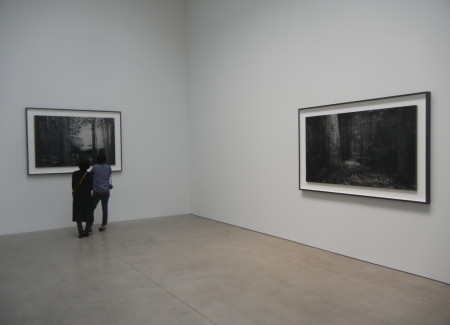
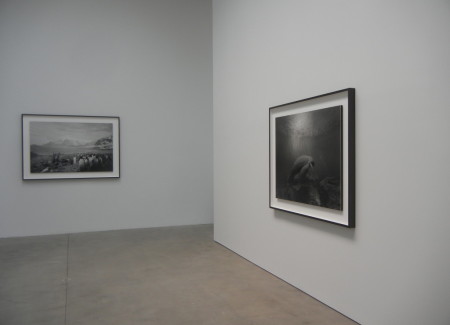
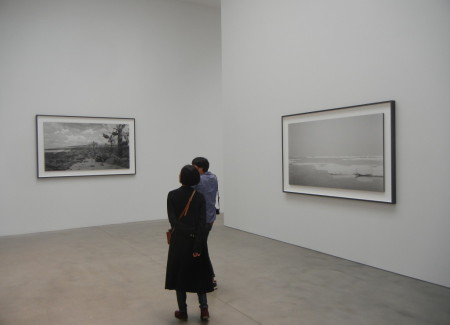

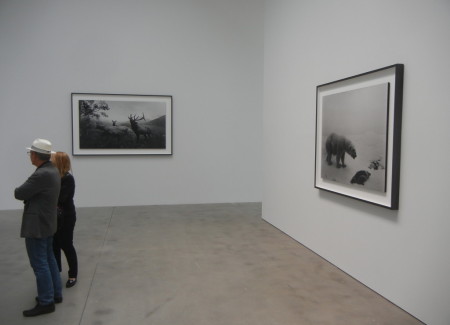
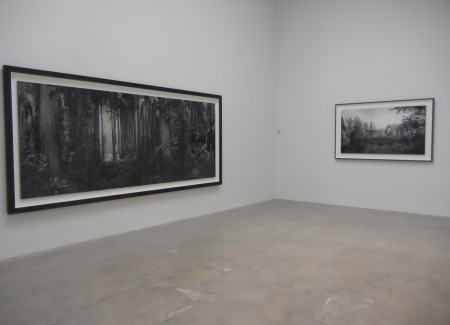






Fab